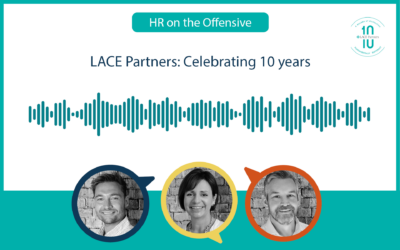In one of our recent podcasts we spoke to Nicki Eyre, who runs Conduct Change and is passionate about eradicating the issue of workplace bullying. In the below summary we look at some of the key considerations businesses should be looking at when trying to understand whether they suffer from cultural issues of workplace bullying and more importantly, how to spot and eradicate any potential signs that they are developing within a business.
What changes have you seen in the last 18 months and how has that changed pre and post-pandemic?
Remote working has changed the working environment for so many people in the UK and globally and with regards to the issues of workplace bullying. I think there has been an assumption – certainly with businesses we have interacted with – that the dangers of workplace bullying have eroded somewhat. After all, people were no longer face-to-face in an office environment, at home and so the notion that it is a safer environment for individuals has created somewhat of a false position when it comes to accepting the potential damage that workplace bullying can have when working remotely.
In fact, in some instances, it has actually heightened the intensity of situations that individuals find themselves in, as they find themselves in a one-to-one situation that – as many blogs and articles on Zoom fatigue, burnout, have debated – can cause greater anxiety as individuals become aware of being watched, of needing to keep eye contact, etc. If a conflict in a relationship already exists, remote video calling has magnified the potential issues that could arise as a result of workplace bullying.
From a HR perspective, what are some of the challenges HR teams have faced in this area?
HR is the front line when it comes to workplace bullying; grievance and disciplinary procedures. It is a very challenging line that HR must tread; they must ensure that they are mindful and supportive of employees, but at the same time ensuring that as representatives of the organisation they are protecting the business from an escalation that could cause reputational risk.
We have seen so many instances in which HR teams, when dealing with people facing a form of trauma, who then naturally project their anxiety on to those that are deeply involved in the process, end up being seen as the problem.
HR as a function is often tasked with managing behavioural issues that should be an organisation-wide responsibility. This is the crux of the matter and this is where we certainly see opportunities for prevention because if an organisation can realise that it needs to shift the capability of its people to be able to address issues leading to workplace bullying, rather than drive all issues in the direction of the HR function, then problems can be addressed before they have had an opportunity to escalate.
How much responsibility does a business needs to take in ensuring line managers can effectively manage the challenges surrounding workplace bullying?
I think the ability for line managers to be effectively trained in the behavioural side of their role and not just the competency and skills-based performance is of paramount importance. There is a huge amount of work to be done in this area for the vast majority of businesses in all sectors that we speak to.
Leaders need to also play a pivotal role here because they need to be able to empower their people – including their line managers – to have a voice, but they also need to be clear on the behaviours that they want to embed within the organisation, they then need to be able to exemplify those behaviours from the top down.
Every individual’s behaviour contributes to the culture of the organisation. Then the organisation itself needs to consider how it is measuring those behaviours. What is the accountability if the behaviours aren’t upheld? And how transparent have you been in communicating this at every level of the organisation? How do you resolve the issues?
We call this a continuous circle of dynamic conduct change; you are constantly reviewing your behaviours and ensuring you uphold them. The pandemic changed a number of behaviours but the organisations that were able to respond to any potential issues arising with regards to workplace bullying were those that were able to constantly reassess themselves.
How can an organisation which has suffered from an environment of workplace bullying change its culture?
There are organisations in which there is an entrenched behaviour that have been in existence for years. Many organisations have a real issue with the term ‘bullying’ because it evokes such an emotional response. But if you look at the term ‘bullying’ as a collection of behaviours that has the potential to harm an organisation or individual, or both, it is a huge spectrum of behaviours. It is about a readiness to start the process. There is no quick fix though and we’ve also seen instances where organisations who are relatively new as a start-up have suffered from people joining from other companies and bringing this ‘culture hangover’ into the business. This can especially be so if a number of people from a business all move across over a short period of time.
What is important is for organisations to work from top to bottom in embedding behaviours, in being transparent and also demonstrating an element of vulnerability. We have worked with organisations who have admitted that they make mistakes, that they are on a journey together but they are working towards improving culture and environment for the whole of the business. That helps employees, line managers and leaders to all stay engaged and has a dramatic effect on improving overall company culture.
If you would like to discuss more on this topic with Nicki you can contact her via LinkedIn, or find out more from the Conduct Change website here.






